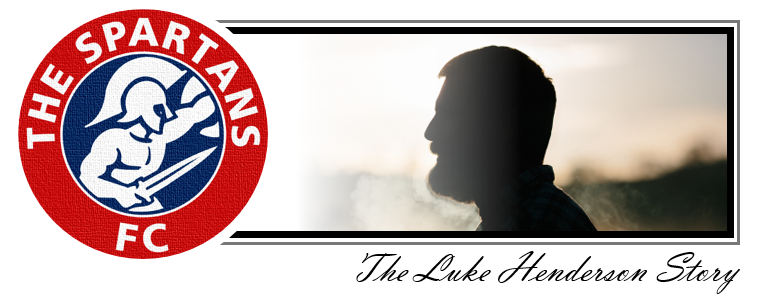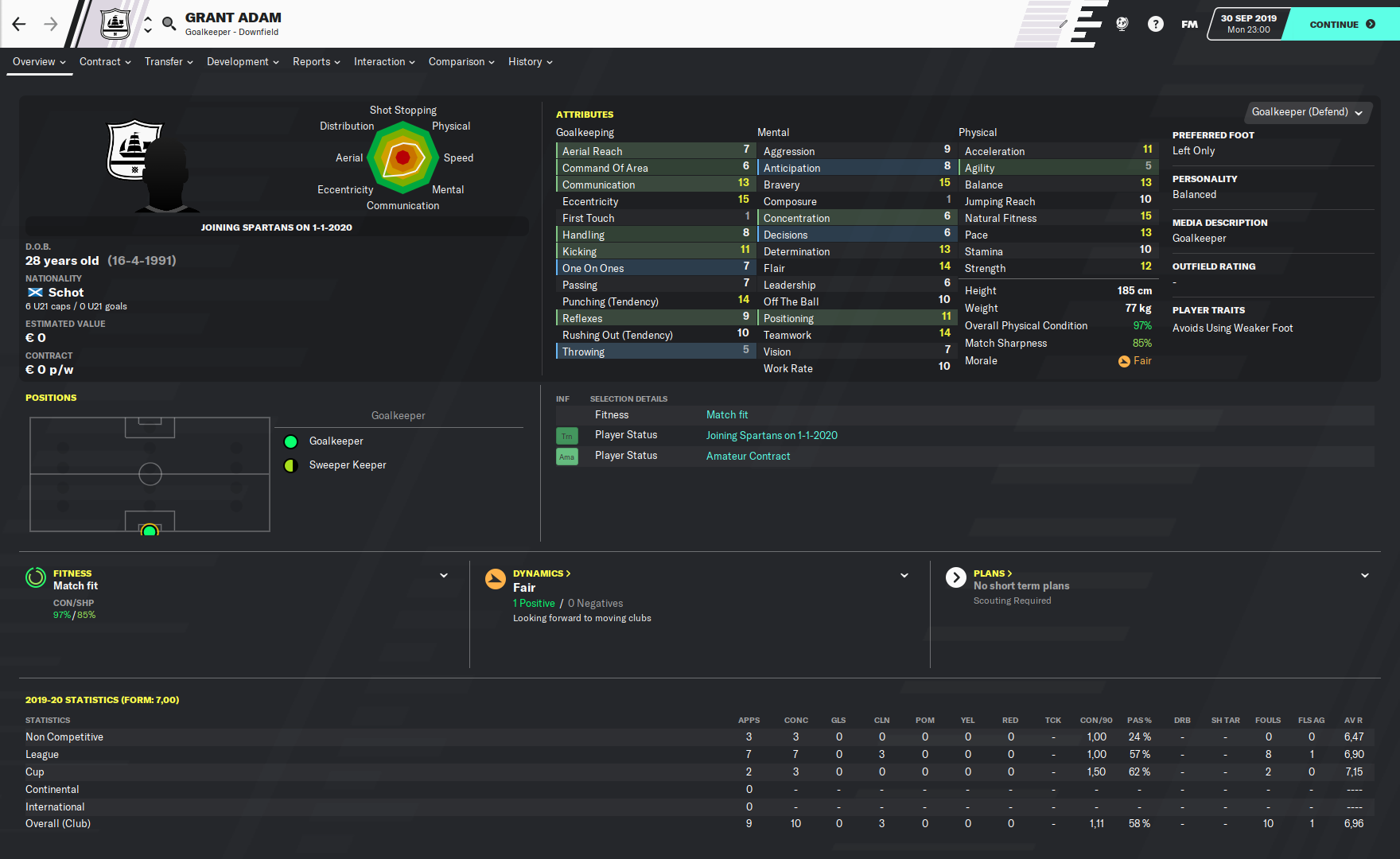
#005 - Club background information
After many years of preparation Spartans finally turned into reality in 1951 after some players from University club Edinburgh couldn’t recognize themselves anymore in the clubs philosophy and established their own. After starting in the sixth and lowest tier in Scottish football the club growth slightly throughout the years, but being a champion was always far ahead. Until the year of 1972. After more than two decades Spartans celebrate their first major trophy by winning the Eastern Conference First Division. Although with the then separated football associations forcing promotion wasn’t possible unfortunately. Spartans repeated their competition winnings eight times more, before a comprehensive restructuring of the Scottish football pyramid was finally accomplished from the 2013/2014 season.
Directly at the start for the first season Spartans were invited to join the newly formed League One, the third tier in Scottish football. It became a huge success immediately for Spartans. They reached into the play-offs in their first season and again four years later. Unfortunately the team wasn’t capable winning the play-offs, but at least it was clear that Spartans can be competitive in the league. Nonetheless the club growth steadily further over the years, invested more money than ever before in their brand new youth academy dated from 2009 and pronounced their wish taking part in the more professional Championship, reaching it in one of the three upcoming seasons, and turning Spartans finally into a full professional club. That will be the main task for the new appointed manager, former Spartans midfielder Luke Henderson.
Ground
Spartans are playing their home matches at Ainslie Park, a former leisure park in the outskirts of Edinburgh. At the main side it holds a small modest roofed stand, offering 530 seats. The rest of the pitch is almost completely surrounded with a small sloped hillock, capable of holding place for more than 2,500 standing people. All the other facilities are quite good, developed recently in 2009, together with the youth academy buildings. But the nearby future for Ainslie Park may be insecure. The grounds are owned by the City of Edinburgh Council and are marked as a site for future real estate development.
That’s the main reason why chairman Craig Graham recently has bought a long term first option for another undeveloped terrain. Officially the location is unknown, but some research in Land Registry data makes clear that Graham is intended to relocate Spartans to the former grounds of the Academicals Sports Centre. An absolutely marvellous location just at the edges of the inner city, measured almost 24 acres. It offers a lot of opportunities, but for now Ainslie Park will be good enough for the next few years. “Although we are very ambitious and looking forward for possible interesting locations for our new campus, we have to reach a higher level in the pyramid first before we could even think seriously about relocate Spartans.” Craig Graham said.
Club structure and vision
The first squad of Spartans counts 22 players, most of them from Scotland. Furthermore there is an under eighteen team playing in one of the youth divisions, which is definitely important for the clubs long term youth players development, and several younger youth teams. Spartans is one of the few clubs in League One maintaining a basic youth academy, but lying within the urban area of Edinburgh and the Central Belt their backyard is wide enough searching for talent. Although Spartans is a satellite club of Premier League side Hearts - which give them the opportunity for hiring talents for a reduced amount of money - the club is completely independent.
The financial situation of the club is healthy at the moment. Chairman Craig Graham is a former businessman with a lot of connections, bringing in a certain amount of money every year from the key sponsors. The clubs budget for the next season will be around £170,000 from which £100,000 can be used for the first team squad wages and incoming players. That sounds quite good, but all players have a part-time contract only, which make them very vulnerable for higher teams when they performing above average. That’s a bit of concerning, but this might be ending soon if the club can be turned professional.
The main club vision for the nearby future and long-term expectations are very clear. Investing in the youth academy and make sure players are breaking through into the first squad. But, to make sure players keeping interested choosing for the Spartans academy, the club really needs to turn into a full professional club instead of the semi-professional status it currently has. That’s why the club is making priority reaching into the Championship in one of the next three season, to secure the future for the youth academy in the first place.












